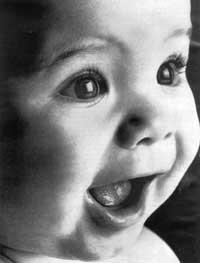Parturition by caesarean section
When a woman is told to perform a C-section, she feels great anxiety and fear. As time passes he accepts it and then waits for it, because the cesarean section has made the pregnancy more calm and hopeful. But let's see some of the characteristics of this technique: what it is, where its name comes from, in what situation it is today, why and how it is done and what its advantages and drawbacks are.
What is it?
Cesarean section is called the expulsion of the child by cut in the womb and uterus.
Where does your name come from?

The name of this court that is currently made to thousands of women, according to legend, since “Julius Caesar” (100-44 BC) comes because it was born like this. Julia, Julio's mother, lived many years after the C-section, and this hypothesis is incredible. The origin of the name can be the Latin concept “lex caesarea”. “Caedere” has been “cut” in Basque, and it was the name of the law that imposed on the mother the cut to save her baby from dying in the last weeks of pregnancy.
What is the situation currently in?
One hundred years ago, Caesarean section meant killing his mother. Even after World War II, before using antibiotics, many mothers die from abdominal infections and blood infections.
Currently, the C-section is a successful court, since:
- It has no greater risk than low birth.
- It's fast.
- If the mother wants to see childbirth, she can use local anesthesia.
- It can be repeated three or four times.
- When they are twins or triplets it is a success.
Cesarean section does not harm the child and can only cause choking in very serious situations.
Why is it done?
After extensive research during pregnancy, or when the low birth is excessively complex, cesarean section may be chosen. Some of the reasons why cesarean section is recommended during pregnancy may be:
- The maternal pelvis is too narrow with the child's head.
- By placenta developed at the exit of the uterus, bleeding at the last moment of pregnancy.
- Incompatibility of the Rh blood groups of the mother and child (with different blood groups of the mother and father, they can be different from those of the mother and the child).
- Replace the child's head in the pregnancy position with the back, in women over thirty years old (especially in the first childbirth).
- By death in a previous low birth.
Some causes of an excessively complex childbirth are:
- Risk of infarction in the child.
- Insufficient extension of the cervix.
In long, sterile, low births, caesarean section is a beneficial solution for the mother. In addition, the transformation of the complex low-c-section delivery does not have to imply a greater risk for previously organized caesarean section.
Where, who and how is it done?
The cesarean section, of course, should be done in the hospital, since it has a suitable blood box and professionals: an obstetrician who decides and develops the technique, an anesthesiologist responsible for the anesthesia and recovery of the mother and baby, and a pulmonologist who will take care of the newborn.
On the technique it can be said that most women prefer general anesthesia. On the other hand, the cut can be of two types: the classic and the transversal. In the classic the belly is cut along and the utero along. This technique is used when the placenta has been developed at the exit of the uterus and the child is crossed. The disadvantages of this technique are that when cutting more blood vessels, the blood flows a little more and the scar that forms is weaker than in the cross-section.
In the cross-sectional technique, the lower part of the belly is cut transversally and in the lower part of the uterus, depending on the situation, in a transversal or longitudinal way. With this technique, more aesthetic results are obtained and, having less tension the scar, decreases the pain.
With one technique or another, the uterus is cut and the water bag is cut. Then, with a vacuum cleaner, the amniotic liquid is aspirated and with another vacuum cleaner, the mucus of the child's mouth and nose are cleaned to breathe as quickly as possible. As a colophon at the most important and varied time of the cesarean section, the hands of the surgeon, with good movement, expel the head, shoulders and body of the child. When breathing, the skin of the child acquires a healthy pink color.
The muscles and blood vessels of the utero guarantee a correct healing of the cut. Therefore, although muscle firmness is greater than that of the scar, a same woman can be made three or four caesarean sections. As well as performing a low birth with great probability of success after a caesarean section. On the other hand, when c-sections are repeated in the same woman, the final cuts are made on the anterior scar.
Finally, we will indicate that the mother's response after the caesarean section is similar to the one she would have in the low birth.
Caesarean section is another development of medicine at the service of humanity and life.





